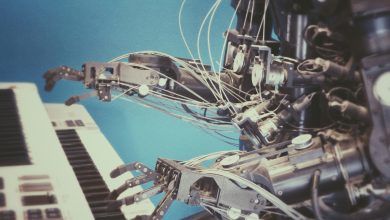
Organizations increasingly blend legacy mainframe systems with modern AI platforms. Mainframes continue to power mission-critical batch jobs, transaction processing, and data warehouses, while AI workloads leverage that data for predictive analytics, natural-language processing, and real-time insights. However, ensuring that data moving from a z/OS environment into AI training and inference pipelines remains accurate, complete, and compliant requires rigorous mainframe testing. By applying proven mainframe testing methodologies—reconciliation, checksum validation, batch-job regression, and automated end-to-end tests—to AI data workflows, teams can bridge the legacy-AI divide with confidence.
1. The Legacy-AI Integration Challenge
Mainframes store decades of historical records—financial transactions, customer profiles, inventory logs—in highly optimized formats like VSAM, IMS/DC, and DB2. AI models, however, require flat files, object stores, or cloud databases in CSV, Parquet, or JSON. Moving this data involves:
- Extracting vast volumes (terabytes to petabytes) in scheduled batch windows
- Converting EBCDIC to ASCII text, normalizing schemas, and reshaping tables
- Streaming recent transactions via APIs, messaging queues, or CDC (change-data-capture)
- Feeding cleansed data into feature-engineering pipelines, training clusters, and inference services
Each handoff is a failure point: corrupted conversions, dropped records, mismatched schemas, or unauthorized exposures. Traditional mainframe testing offers disciplines to validate such transfers. By extending these to AI pipelines, teams ensure their models train on trustworthy data and make reliable predictions.
2. Mainframe Testing Fundamentals
Mainframe testing grew out of the need for absolute data fidelity in mission-critical environments. As organizations extend legacy data into AI-driven applications, these foundational testing practices ensure end-to-end accuracy:
- Record-Level Reconciliation:
At its simplest, this involves comparing source and target row counts. In practice, you automate scripts that not only validate the total number of records extracted from a DB2 or VSAM file but also cross-check counts after each ETL stage—extraction, transformation, and load. To catch subtle misalignments, sampling frameworks pull a representative subset of records (e.g., every 1,000th row) and perform field-by-field equality checks, ensuring that customer IDs, transaction amounts, and timestamps remain identical across systems. - Checksum & Hash Validation:
Silent corruption can occur during large-file transfers, especially over high-latency networks or through multi-stage pipelines. By computing MD5 or SHA-256 hashes on entire files—or on logical partitions (e.g., monthly data shards)—you detect any byte-level changes immediately. For relational loads, this technique extends to per-column aggregates: calculating hash sums of concatenated field values or rolling hashes across critical columns (like account balances) to guarantee that no single bit flips in transit. - Batch Job Regression:
Mainframe environments rely on COBOL programs and JCL scripts to process data in nightly or on-demand batch runs. Regression testing re-executes these jobs against controlled test datasets to verify that output reports, flat files, and database tables match known baselines. When applied to AI data pipelines, you mirror this by running your Spark or Python ETL transforms on historical snapshots—ensuring that logic changes (e.g., new feature-engineering steps) do not inadvertently alter previously validated results. - Schema Conformance Checks:
Just as copybooks define field layouts on z/OS, modern pipelines require strict enforcement of field formats, data types, and nullability. Schema validation tools—whether built into your ETL platform or provided by a schema registry—automatically reject records that deviate from the expected structure (e.g., date fields in the wrong format or unexpected nulls in mandatory columns). This prevents downstream ML training jobs from encountering parsing errors or skewed feature distributions. - Auditable Logs:
Compliance standards such as GDPR, HIPAA, and SOX mandate detailed audit trails. Mainframe testing frameworks record immutable logs of every extraction, transfer, and load step—complete with timestamps, user IDs, and job parameters. In AI workflows, you replicate this by capturing metadata in a centralized logging system (e.g., ELK or Splunk), attaching checksums and row-count deltas to each log entry, and enforcing retention policies that preserve logs for audit periods.
These practices map naturally to AI data pipelines when adapted to modern tooling. By combining traditional mainframe rigor with contemporary ETL and orchestration frameworks, you build a resilient foundation that ensures your AI models train on—and serve—only consummately verified data.
3. Mapping Mainframe Jobs to AI Data Pipelines
To apply mainframe testing, first inventory your dataflow:
- Batch Extractions: Nightly JCL scripts that dump customer ledgers to sequential files.
- Streaming Updates: CDC feeds via MQ Series or Kafka connectors for real-time transactions.
- Transformation Jobs: ETL processes that normalize, aggregate, and enrich records.
- Feature Store Loads: Ingestion into HDFS, S3, or a feature-store database for model training.
- Inference Payloads: Real-time data pulled from APIs for online model scoring.
For each stage, assign corresponding test types:
| Stage | Mainframe Test Analogue | AI-Pipeline Test Variant |
| Batch Extraction | Row counts + field checksums | Count files, validate Parquet/CSV checksums |
| Streaming Ingestion | CICS transaction regression | Stream validation with schema registry checks |
| ETL Transformation | Batch job regression | Automated end-to-end ETL unit and integration tests |
| Feature Store Load | VSAM vs. DB2 reconciliation | Table row counts, column-level profiling |
| Inference Payloads | Transaction smoke tests | API contract tests, payload schema validation |
4. Data Integrity Techniques for Large-Scale Transfers
4.1 Record and Field Counts
Automate row-count assertions: if 10 million records leave the mainframe, exactly 10 million must arrive in your data lake. Further, sample key fields—customer IDs, transaction amounts—for matches.
4.2 Checksums and Hashes
Compute block-level hashes on a mainframe sequential file before transfer. After loading into S3 or HDFS, recompute and compare. For relational loads, build per-column aggregates (e.g., sum(amount), count(non-null status)) to detect field-level drift.
4.3 Automated Sampling
Define a reproducible random seed to select N records per dataset. Pull those from mainframe extracts and AI target stores, comparing every byte or field token. Script this in Python or Spark jobs for thousands of samples nightly.
4.4 Schema Validation
Leverage tools like Apache Avro or Protobuf schema registries. Enforce evolution rules so AI pipelines reject records that deviate—or invoke fallback handling—mirroring mainframe schema-validation rigors.
4.5 Encryption and Integrity
When data is encrypted in transit (HTTPS, VPN) and at rest (AES-256, zero-knowledge), embed HMACs alongside payloads. Validate HMACs post-load to detect any tampering or misconfigurations.
5. Automating Regression for Batch and Real-Time Feeds
Regression testing ensures that code updates—ETL script changes or connector upgrades—do not break existing dataflows.
5.1 Scheduled Regression Jobs
- Nightly Full Runs: Re-execute full extraction and load in a staging environment, comparing outputs to golden baselines using automated scripts.
- Smoke Tests on PRs: Trigger small-scale regression on key tables for every code merge, failing fast if discrepancies arise.
5.2 Synthetic Data Scenarios
Inject edge-case records—null fields, maximum field lengths, special characters—into test datasets. Confirm that new pipelines still handle these gracefully, without data loss or errors.
5.3 Canary Deployments for Connectors
When updating mainframe-to-Kafka connectors, route 10% of data through the new code, run regression checks in parallel, then gradually ramp up.
5.4 Self-Healing and Monitoring
Incorporate mainframe testing principles into monitoring: if a checksum mismatch occurs, automatically retry the transfer or rerun the job. Alert on SLA breaches and self-heal transient failures.
6. Compliance, Security, and Audit Considerations
AI workloads often involve PII, financial, or healthcare data. Mainframe testing frameworks have mature audit trails—extend these to AI:
- Immutable Logs: Centralize ETL and transfer logs in an append-only store (e.g., AWS S3 with MFA delete).
- Access Auditing: Record every user and service that decrypts or transforms data, matching z/OS RACF or ACF2 logs.
- Data Residency Checks: Automatically verify that no records land in unauthorized regions, enforcing cloud-provider tags.
- Retention Policy Enforcement: Use automated jobs to purge or archive data consistent with regulatory timelines—just as mainframe archives do.
7. Monitoring and Continuous Validation
Beyond scheduled tests, implement continuous checks:
- Data Drift Detection: Monitor statistical profiles (mean, variance, null ratios) of key fields. Alert if drift exceeds thresholds.
- Anomaly Detection: Run lightweight ML models to detect pattern anomalies—sudden gaps or spikes—in streaming data.
- End-to-End Heartbeats: Periodically run a minimal extract-transform-load with sample records, verifying the full pipeline in under five minutes.
These live validations—rooted in mainframe reliability—ensure AI pipelines remain healthy between full regressions.
8. Case Study: Validating an AI Recommendation Dataset
A retail chain migrates its daily sales transactions from DB2 to an S3-backed feature store for AI-based recommendation models:
- Baseline Extraction: A JCL job dumps “yesterday’s sales” into a flat file on z/OS.
- Checksum & Upload: A shell script computes SHA-256, then S3 upload jobs verify the hash.
- ETL Transform: A Spark job aggregates item-level features, writing Parquet to S3.
- Feature-Store Load: A Hive-managed table loads the Parquet files.
- Regression Validation: A daily regression job compares row counts, recomputes item sales aggregates, and cross-verifies customer totals with the mainframe source. Any mismatch triggers an alert and a rollback to the previous day’s feature set.
This end-to-end mainframe testing approach ensured the AI recommendations never consumed flawed data—maintaining both model accuracy and business trust.
9. Best Practices and Tool Recommendations
- Leverage Mature ETL Testing Frameworks
Integrate specialized data-testing platforms such as testRigor or Great Expectations to augment your mainframe testing practices. These tools provide built-in patterns—like data‐drift detection, column-level profiling, and automated assertions—that mirror traditional batch-job validation, but in modern ETL pipelines. By defining “expectations” (e.g., no nulls in key columns, foreign-key referential integrity), you can continuously validate transformed data before it reaches AI feature stores or model training jobs. - Automate within CI/CD
Embed your data‐pipeline regression suites directly into your software delivery workflows. Use Jenkins, GitLab CI, or GitHub Actions to trigger mainframe-style reconciliation jobs on every commit that affects data extraction scripts, transformation logic, or loading configurations. Configure stages so that failures in data counts, checksum mismatches, or schema violations automatically block deployments—just as unit tests do for application code. This enforces a “shift-left” approach to data quality, catching issues earlier and reducing rework. - Adopt Schema Registries
Centralize your schema definitions with tools like Confluent Schema Registry or AWS Glue Data Catalog. Enforce strict compatibility rules—backward, forward, or full—so that any change to data structures is vetted before it propagates. At each pipeline entry point, validate incoming Avro, Protobuf, or JSON records against the registered schema. This prevents silent data corruption and aligns with mainframe practices of enforcing copybook and DB2 table definitions before batch-job execution. - Use Distributed Compute for Sampling
For large-scale datasets, per-record comparisons can be prohibitively slow if run on a single node. Leverage distributed frameworks such as Apache Spark or Apache Flink to parallelize sample extraction and record-level hashing across your cluster. Define sampling strategies (random, stratified, or time-windowed) and execute integrity checks in parallel, reducing test runtimes from hours to minutes. This approach mirrors mainframe’s parallel batch-job streams but applies it to petabyte-scale AI datasets. - Implement Robust Alerting
Don’t let data-quality alerts get lost in email inboxes. Integrate your testing tools with incident-management systems—PagerDuty, Opsgenie, or Slack—to push real-time notifications when integrity checks fail. Configure alert thresholds (e.g., >0.1% row-count variance or repeated checksum mismatches) to trigger automated escalations. Enrich alerts with context—failed SQL queries, sample diff logs, and visualization links—so that data engineers can triage and resolve issues rapidly, maintaining the reliability you’d expect from mainframe environments.
By combining these best practices—mature data-testing frameworks, CI/CD automation, schema governance, distributed sampling, and proactive alerting—you create a comprehensive, scalable validation layer that brings mainframe-grade rigor to your AI data pipelines.
10. Conclusion and Next Steps
Bridging legacy mainframes and modern AI workloads demands rigorous testing at every data handoff. By applying mainframe testing disciplines—row and field reconciliation, checksum validation, batch-job regression, and continuous monitoring—to AI data pipelines, organizations can safeguard the integrity, accuracy, and compliance of their models. Start by mapping your existing mainframe jobs to AI workflow stages, implement automated regression and sampling, and integrate tests into your CI/CD and monitoring stacks. The result is a resilient, transparent data foundation that powers reliable, high-impact AI solutions.
Author Byline:
Joshua Yanong is an AI Automation Engineer and Authority Specialist at testRigor. He writes about AI-powered test automation and its impact on QA and software development, helping teams modernize their testing strategies with intelligent tools.




